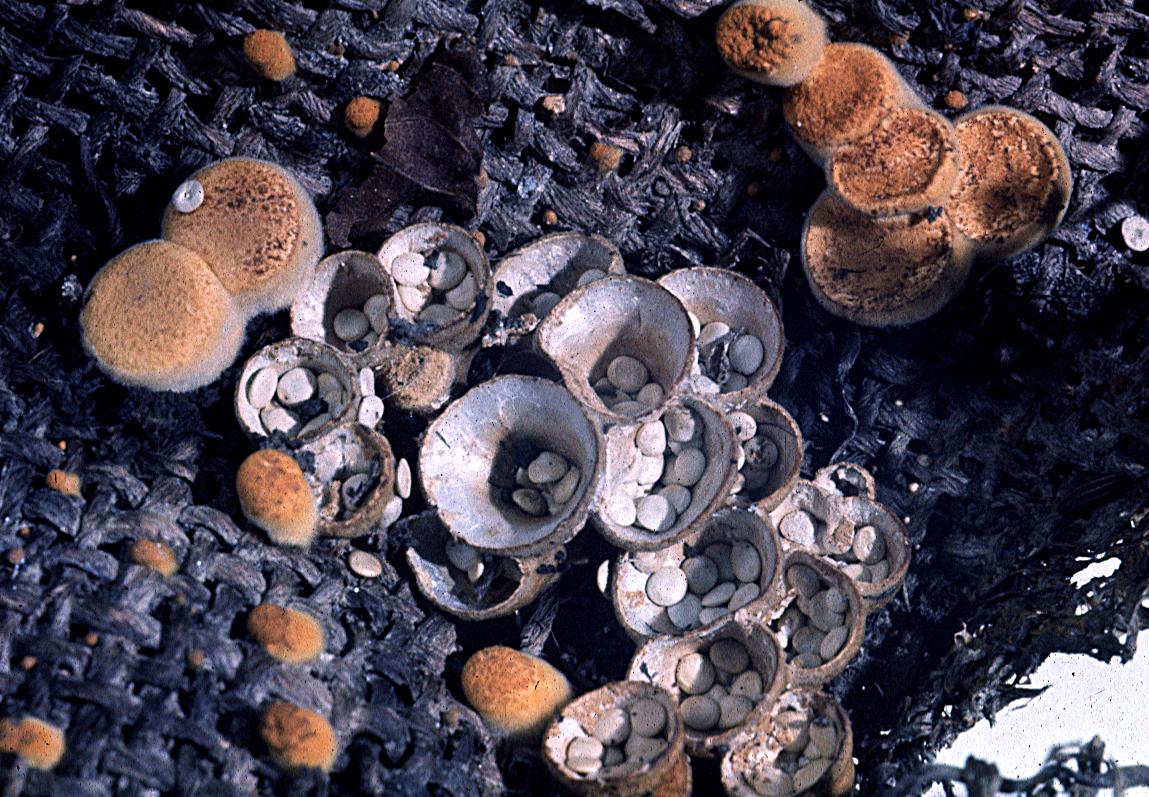A Woody Wonderland
| Cyathus striatus is commonly found during the months of July through October and mainly lives on tree bark or wood mulch. Also, this fungus can be found scattered or gathered in clusters on forest debris in the open woods. Cyathus striatus is primarily found in the woods of temperate North America and in Europe. |
 |
The bird’s nest fungi can survive in the woods because it is low maintenance. The fungi generally only need raindrops to disperse the basidiospores. Then, the basidiospores germinate and live in another area of the woods. Several other kinds of organisms live in the woods of temperate North America and Europe along with Cyathus striatus. Some of the organisms that live in the woods of these areas include elk, beavers, foxes, wolves, Spruce, Fir, and Pine trees.
The relationship of Cyathus striatus with other organisms is saprobic because it uses non-living organic material as a substrate. As a saprophyte, this fungus helps decompose organic matter and returns beneficial nutrients to the soil. Cyathus striatus, along with other fungi begin most food webs as decomposers. Also, the fungi can provide food for bacteria and some insects, although they are not east to decay. As far as interactions with humans, the fungi do not cause any negative effects on humans. Even if someone were to consume the bird's nest fungi they would not be harmed. Even though the fungi is inedible, there is no evidence of the fungi being poisonous (Kuo, March 12, 2007).
I chose to do my website on the fungi, Cyathus striatus, because I found it the most interesting. I was reading about the different fungi on http://www.tomvolkfungi.net/ and came across the page for Cyathus striatus. I was amused that a fungi could resemble something so intricate as a bird’s nest. Also, I found it impressive that most trees depend on different fungi to provide nutrients to their roots. This mutualistic relationship is commonly known as mycorrhizae, which are fungus-root associations. Plants and trees that have mycorrhizae in their roots grow much better than those that do not. Other people should find Cyathus striatus interesting because it is helpful in the environment. The absence of this fungus as well as other fungi would be damaging to the world, as fungi begin most food webs. |
 |
The relatives of Cyathus striatus are just as interesting in many ways. For example, Sphaerobolus stellatus, is smaller than Cyathus striatus but is still extremely powerful. Sphaerobolus stellatus can fire a peridiole a long distance to a new substrate.
According to a successful mycologist, Buller, the fungi Sphaerobolus stellatus have the ability to send a peridiole over 18 feet! It is impressive |
| what these tiny fungi are capable of doing. Another relative of Cyathus striatus is Cyathus olla, commonly found in Europe and North America. Instead of living in the wood this fungus lives in the soil in the early spring to early winter. I found Cyathus olla interesting because they are trumpet shaped and have a felt texture. Cyathus striatus and its relatives are all different and fascinating in several ways (Volk, March 12, 2007). |
For information on the sources used to create this website click here
|

